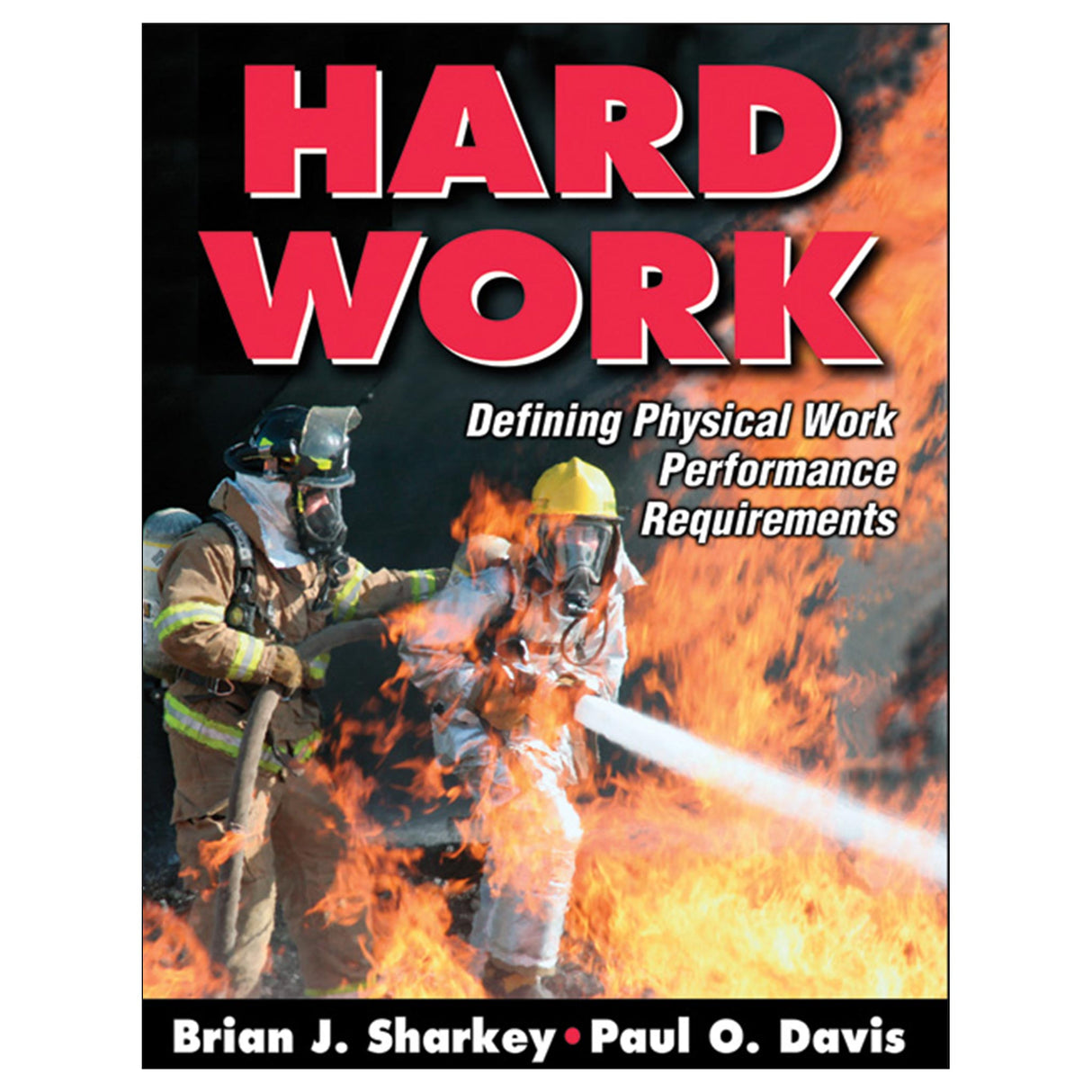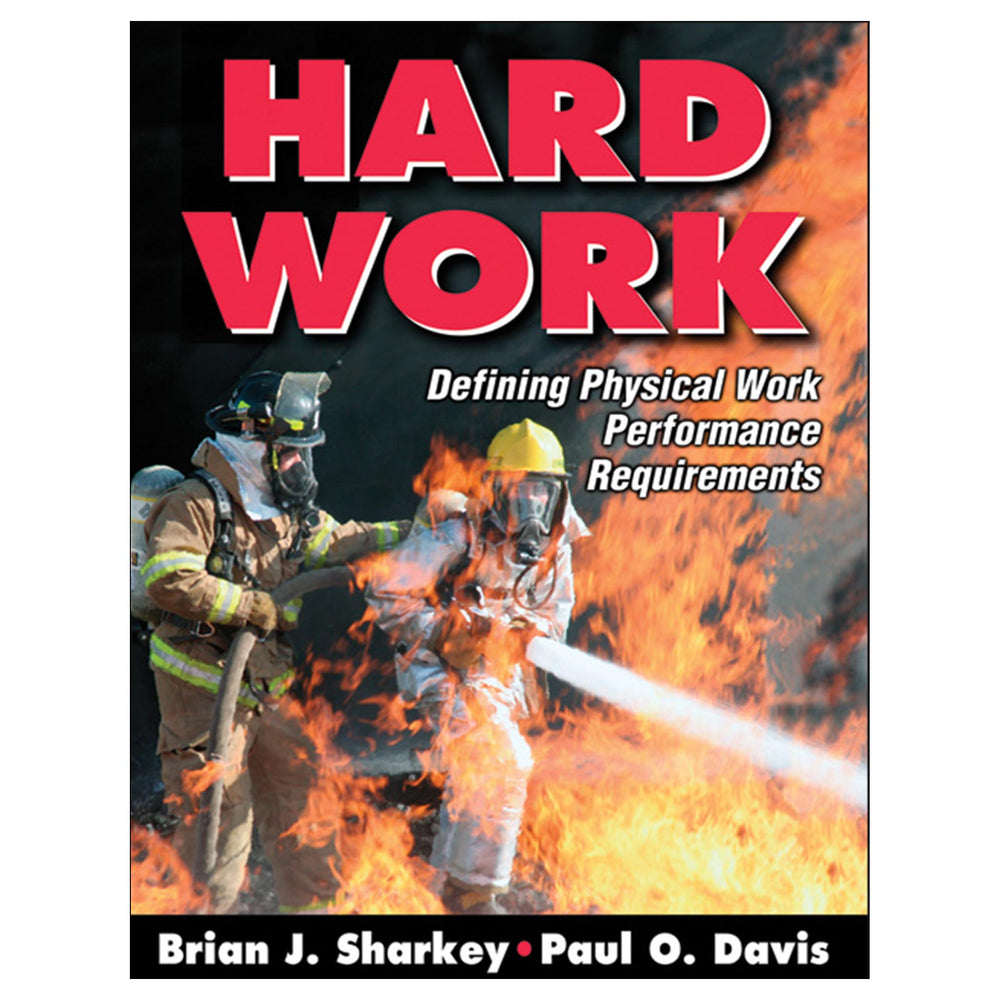Hard Work PDF
Defining Physical Work Performance Requirements
Author: Brian J. Sharkey, Paul O. Davis
$91.95 CAD
Access Duration: 10 Years
Hard Work:Defining Physical Work Performance Requirements focuses on physically demanding occupations that require strength and stamina, such as law enforcement, structural and wildland firefighting, mining, forestry, and the military. It is the first book to examine the relationship of recruitment practices, physical training, and physical evaluation to the intricate environment of corporations, labor organizations, the legal system, and employment rights.
Hard Work assists readers in making intelligent and informed decisions resulting in a safer, healthier, and more productive work force. Authors Brian Sharkey and Paul Davis have spent more than 70 years combined researching worker performance in physically demanding professions. Hard Work brings their perspective as exercise scientists to an examination of these factors:
- •Work requirements and capacity for physically demanding jobs
- •Physical characteristics of the “athlete-worker,” including aerobic and muscular fitness
- •Test development, validation, and utilization in employee selection
- •Employee health and job-related fitness
- •Environmental factors affecting employee performance, such as heat, cold, and altitude
- •Respiratory protection and lifting guidelines
- •Legal aspects of employment, consequences of legal decisions, and a proposed alternative to litigation
By using case studies and real-life examples of tests and programs, the authors teach readers how to evaluate recruits and maintain employee health and safety. The book also includes nine appendixes offering valuable perspectives on testing, job-related fitness, policies, procedures, and performance assessment.
Hard Work:Defining Physical Work Performance Requirements is organized into five parts. Part I begins with definitions of the physically demanding occupation and characteristics of workers available for employment. The legal aspects of employment are also considered, including reference to age, gender, race, and disability.
Part II examines the value of initial and periodic evaluations, the test development process, and issues related to testing. Additionally, part II contains an examination of the effects of court decisions and labor unions on the evaluation processes of both new and incumbent employees.
Part III discusses implementation of recruit testing designed to determine those individuals who can and cannot perform the job. The inherent challenges in shifting from recruit testing to periodic tests for incumbents are described, and ways to evaluate the costs and benefits of testing and training programs are examined.
In part IV, the values and limits of medical examinations and employee wellness programs are considered. Part IV also discusses work physiology and its relationship to performance and presents the job-related physical fitness program as the essential element required for preserving career-long performance and health.
Part V discusses employee performance in extreme environments, respiratory protection devices and their impact on the worker, and guidelines designed to reduce the risk of back injuries. It concludes with an examination of legal issues and a proposed alternative to litigation using a collective approach that avoids confrontation and biased testimony and saves taxpayer money.
Hard Work:Defining Physical Work Performance Requirements suggests how workers could benefit by working up to job requirements while maintaining their health, safety, and job performance. This unique text seeks to bring about a paradigm shift wherein workers are viewed as occupational athletes who, aided by effective recruitment, testing, and training, receive the necessary support to help them excel in their physically demanding workplace.
Part I: The Job and the Worker
Chapter 1: Physically Demanding Occupations
Chapter 2: The Worker
Chapter 3: Employment Opportunity
Part II: Test Development and Validation
Chapter 4: Job-Related Tests
Chapter 5: Test Validation
Chapter 6: Test Implementation
Part III: Employee Selection Practices
Chapter 7: Testing New Employees
Chapter 8: Testing Incumbent Employees
Chapter 9: Program Evaluation
Part IV: Employee Health, Physiology, and Performance
Chapter 10: Employee Health
Chapter 11: Physiology of Work
Chapter 12: Job-Related Fitness
Part V: Job-Related Issues
Chapter 13: Environmental Impacts
Chapter 14: Respiratory Protection
Chapter 15: Lifting Guidelines
Chapter 16: Legal Issues
“In Hard Work: Defining Physical Work Performance Requirements, Drs. Brian J. Sharkey and Paul O. Davis have now provided an excellent scientific examination of the role of physically intense work on the worker who performs arduous and often dangerous occupations. How to test prospective employees and incumbents as well as legal issues are dealt with in a very professional and valid manner. This text is useful for supervisors and workers who wish to understand hard work in the physically demanding performance professions.”
-Dr. Al Morris, FACSM, Director of Health Improvement and Physical Fitness Programs for the United States Border Patrol





